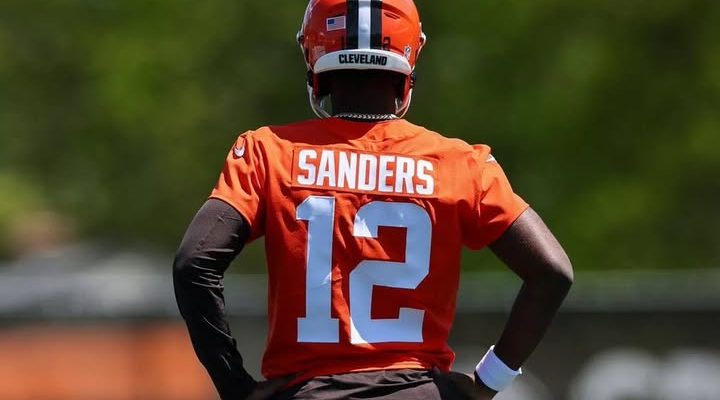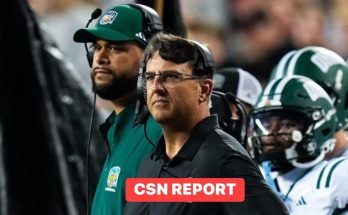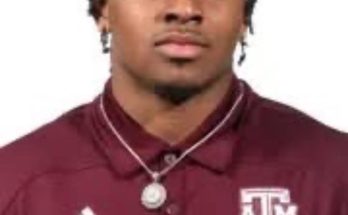Dan Orlovsky has never been one to mince words, and this time he’s firmly setting the tone for one of the NFL’s biggest quarterback questions heading into the 2025 season: who will start Week One under center for the Cleveland Browns? With an air of controlled exasperation, Orlovsky weighed in during an ESPN segment and declared, “I need the entire regular season to see what I have in Dillon Gabriel and Shedeur Sanders. What are we doing in Cleveland?” His rhetorical challenge struck a nerve—not just in Berea but across the NFL landscape—as fans, analysts, and even team insiders are wondering how the Browns are managing the most fascinating quarterback dilemma in years.
Cleveland’s quarterback room is now home to two of the most decorated and talked-about young quarterbacks to enter the NFL in recent memory. Dillon Gabriel, the sharp lefty out of Oregon by way of Oklahoma and UCF, possesses years of college experience, a compact release, and a football IQ that has impressed scouts despite not being drafted as highly as others. On the other side, Shedeur Sanders—the son of NFL icon Deion Sanders—has brought more than just name recognition to Cleveland. With impeccable mechanics, poise, and a 9-for-9, two-touchdown performance in his first training camp scrimmage, Sanders has turned heads with his near-flawless execution and natural command.
What has made the situation even more compelling is that both quarterbacks seem ready for the job—but the Browns’ coaching staff has yet to tip their hand, choosing instead to maintain what Orlovsky and others believe is a deliberately ambiguous stance. What’s at stake isn’t just a decision on a Week One starter; it’s potentially the identity and direction of a franchise still searching for sustained success and consistency. It’s not just a matter of who’s better in August, but who gives this team the best chance to win long-term, and how to ensure that Cleveland doesn’t once again fumble away a golden opportunity at quarterback stability.
Orlovsky’s demand for a full regular season of data isn’t about indecision—it’s about information. His critique of the Browns’ potential inclination to choose a starter after only a few preseason snaps speaks volumes about the delicate nature of quarterback development. “This isn’t a situation where you throw one guy out there for two drives and make a call,” Orlovsky said on-air. “You owe it to your organization, your fanbase, and honestly, to these two young men, to give them real game situations. Let them take hits. Let them face adversity. Let them command the huddle when it matters.”
The Browns have long been criticized for mismanaging their quarterback situations. From Johnny Manziel to Baker Mayfield to Deshaun Watson’s turbulent tenure, the position has been the franchise’s Achilles heel for decades. Now, for once, they appear to have a problem most teams would envy—two high-upside quarterbacks on rookie contracts with contrasting styles and immense leadership qualities. Yet, Orlovsky fears the Browns could squander this unique advantage if they approach it with too much caution or knee-jerk urgency.
Shedeur Sanders is the more naturally marketable figure. The hype surrounding his arrival in Cleveland was as much about his pedigree as it was his production at Colorado. Fans wearing “Prime Time 2.0” jerseys have already flooded team shops, and every movement he makes in camp draws social media buzz. But Shedeur isn’t just flash—he’s function. His impeccable pocket awareness, willingness to go through progressions, and clean decision-making suggest he might be ready to lead on day one. Yet some insiders wonder if elevating him too quickly could stunt his development or put him in the crosshairs of harsh media scrutiny if the team struggles out of the gate.
Dillon Gabriel, on the other hand, is quieter and less flashy. He lacks the media magnetism of Sanders but has quietly impressed coaches with his preparation, his film study habits, and his leadership. Gabriel’s experience running multiple offensive systems across three major programs has given him a level of schematic fluency that’s rare for rookies. He may not have the arm talent Sanders possesses, but his ability to read defenses, anticipate windows, and manage tempo has reportedly made him a favorite among several offensive coaches in Cleveland’s building.
There’s also the matter of locker room dynamics. Both quarterbacks are reportedly well-liked, but there’s a growing sense that the locker room might already be tilting in Sanders’ favor. Veterans have spoken highly of his maturity and approach. One defensive player anonymously told a local reporter, “When Shedeur talks, you listen. He doesn’t act like a rookie. He acts like he’s already been leading men for years.” Still, others see Gabriel as the better short-term fit, a steady hand to help guide the Browns through the early grind of the season.
It’s into this complex stew of talent, perception, and potential that Orlovsky tosses his grenade: Why on earth are the Browns considering making a quick decision on their starter at all? “I get it, coaches want continuity, and you want your team to know who the guy is,” Orlovsky said. “But what’s more important—naming a starter in August or making the right call in October?”
He points to examples from NFL history where teams botched quarterback competitions by cutting them off too early—either ruining the confidence of the benched player or putting too much pressure on the chosen one before he was ready. “I’ve seen teams ruin promising guys because they rushed the process. This is not a one-preseason-game thing. This is a 17-game evaluation. Period.”
From a strategic standpoint, there’s also the question of how Cleveland can best leverage the unique skills of both players. Gabriel excels in RPO and quick-read concepts, while Sanders is more comfortable with deeper dropbacks and complex route trees. The Browns could, in theory, design a hybrid system or even rotate quarterbacks early in the season until one clearly distinguishes himself. But that carries risks too. Rotations at quarterback can often prevent either player from establishing rhythm or leadership authority. Orlovsky didn’t advocate for a rotation per se—but he did suggest that a long leash, not a short fuse, is what these quarterbacks need.
Adding pressure to the situation is the fact that the AFC North remains one of the NFL’s most brutal divisions. With Lamar Jackson and the Ravens looking like early Super Bowl favorites, Joe Burrow healthy again in Cincinnati, and even Pittsburgh showing signs of a defensive resurgence, the Browns cannot afford to get the quarterback decision wrong. A 1-3 start could be a death sentence, especially if it comes with media second-guessing and locker room whispers about whether the other guy should’ve started all along.
There’s also the front office perspective. Both quarterbacks are under cost-controlled contracts, and the Browns would love to build a sustainable roster around whoever proves to be the long-term answer. Choosing prematurely, however, could affect how they approach the trade deadline, how they spend their cap space next offseason, and what kind of offensive system they fully commit to.
Orlovsky’s take may come off to some as overly cautious or overly analytical. But for a franchise with as painful a quarterback history as Cleveland, his logic is grounded in decades of missteps. “If I’m Cleveland, I’m not worried about a PR win in August,” he said in closing. “I’m worried about being in the playoffs in January. And to get there, I need to know—not guess—who my guy is. That takes time. That takes games. And frankly, that takes courage.”
As training camp progresses, both Dillon Gabriel and Shedeur Sanders will get more reps, more scrutiny, and more opportunity to seize the job outright. But unless one pulls away dramatically, Orlovsky’s call for patience may be the wisest play in a league addicted to immediacy. For now, the Browns’ front office and coaching staff remain tight-lipped. But the longer they wait to name a starter, the louder Orlovsky’s question will echo in Cleveland and beyond: What are we doing?



